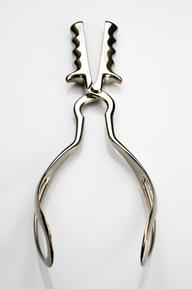

Catheter used in the process of IVF, Europe, 1999
- Made:
- 1999 in Europe and United Kingdom




Plastic catheter, 'monojet' brand, unsigned, British, 1999. Used to place eggs back in the womb during the IVF process (see note).
Fertilised eggs are implanted into the womb using a catheter. The equipment is essential in IVF (in vitro fertilisation). IVF helps couples with fertility problems conceive a child.
IVF was pioneered in the UK in 1978. It is controversial. It is expensive and invasive. Only a low percentage of procedures result in a successful live birth. There is also a higher chance of multiple births causing risk to both mother and foetuses. Opponents of IVF argue unused embryos are used for experimentation. This raises issues of human rights as well as when an embryo becomes a human being.
Details
- Category:
- Obstetrics, Gynaecology & Contraception
- Object Number:
- 2002-385
- Materials:
- plastic (unidentified) and rubber (unidentified)
- Measurements:
-
overall: 16 mm x 333 mm x 10 mm, .005kg
- type:
- catheter
- credit:
- Institute of Obstetrics and Gynaecology




